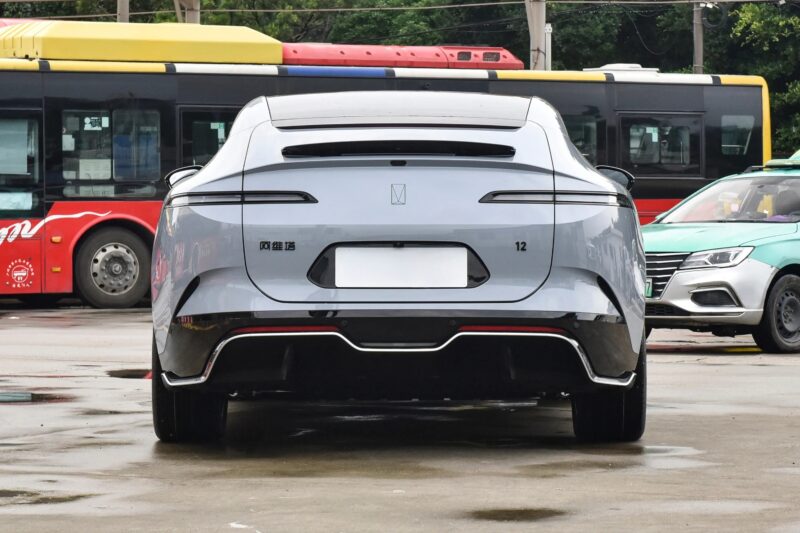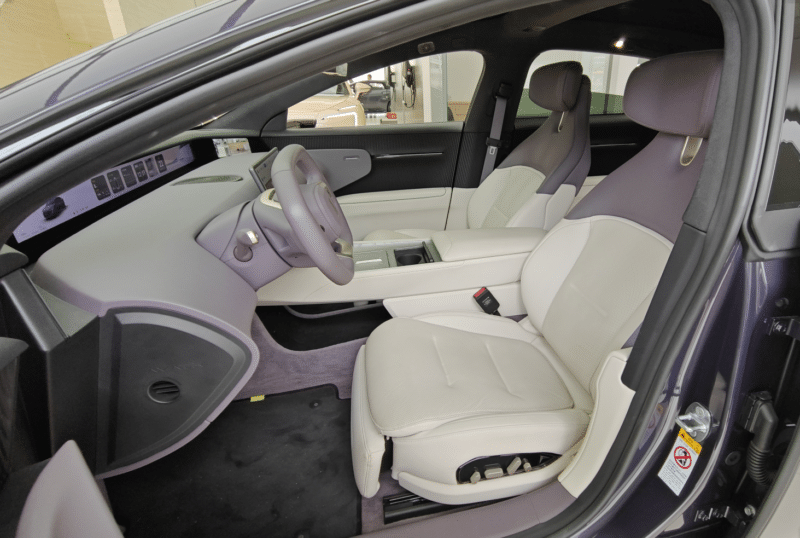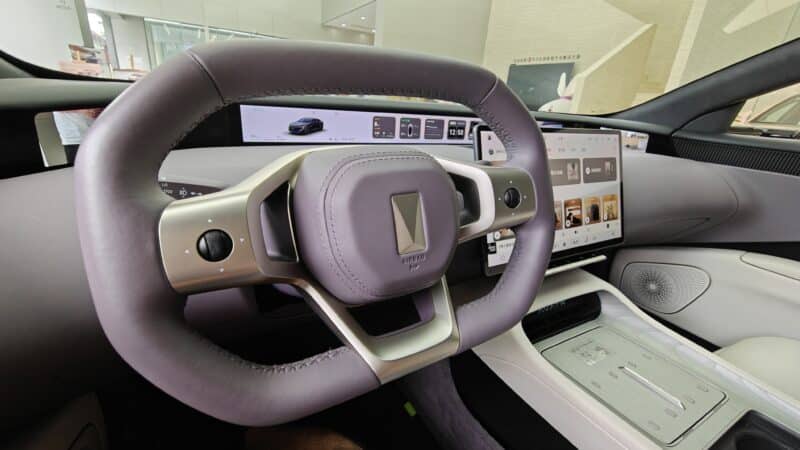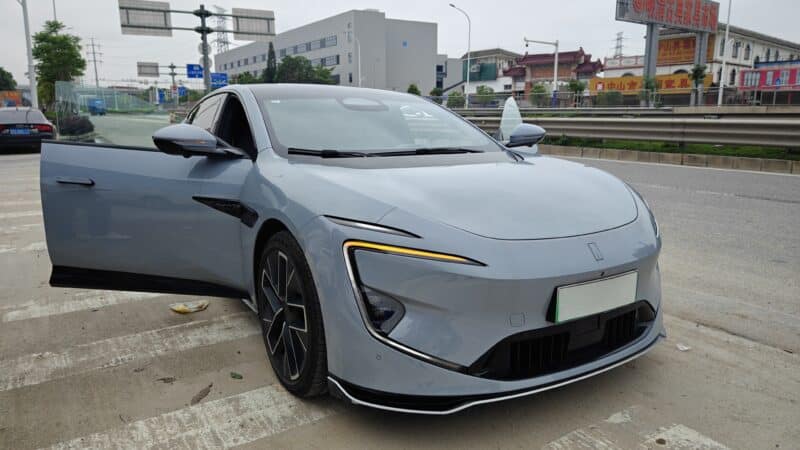Sunday China Drive | Avatr 12: Huawei’s Advanced Driving System 2.0 shines
The Avatr 12 electric fastback sedan captured the attention of automotive enthusiasts when it was first revealed at the IAA Mobility 2023 in Munich, Germany. Soon after, it launched in China and has sold over 40,000 units til now. In late March, a revised version of the Avatr 12 was introduced to compete with models like the Xiaomi SU7. On this week’s Sunday China Drive, we will look at this flagship vehicle from Avatr Technology, a joint venture between Changan, CATL, and Huawei, and see how it performs.


Booking for a test drive
I went online and made reservations for a test drive for the Avatr 12 a few days in advance. This time, I picked a traditional “4s” dealership instead of a nearby shopping mall. What are the 4s? The 4s include sales, spare parts, service, and surveys. Many in China choose to go to 4s dealerships due to their reputation, even though the prices may be higher.

First Impressions
Our test car is the Avatr 12 Luxury 700 RWD, priced at 278,800 yuan (38,500 USD). Although the Avatr 12 may appear to be a large premium sports sedan, upon closer inspection, it is a four-door coupe with a fastback design that omits the rear window, contributing to its unique looks. It has frameless doors with retractable door handles. The LED headlights resemble an “E-shape” integrated into the front bumper. There is a Halo Display on the hood, which is optional.

The large fastback measures 5020/1999/1460 mm and has a wheelbase of 3020 mm. The front, side, and rear diffusers give it a sporty appearance. All the panels are well aligned. Former BMW designer Nader Faghihzadeh designed the Avatr 12, which features the design philosophy of “Future Elegance.”

The Interior
The doors open electronically, signaling the vehicle’s luxury status. The cockpit is minimalistic. The Avatr 12 has Nappa leather seats and an oval-shaped steering wheel. Dominating the center panel is a 15.6-inch floating touchscreen that runs on Huawei’s HarmonyOS. The physical buttons beneath the touchscreen control the 360 cameras and the electric windows. Wait, electric window controls on the center console? Isn’t this design from the 90s? Let’s get back to the report. Above the console lays a 35.4-inch 4K display that functions as the instrument cluster and is also customizable. Above is the digital rearview mirror. The side view cameras are optional.

The front seats include dual zero-gravity seating with temperature adjustments, massage functions, and adjustable leg support. Thanks to the unique design of the battery, the rear passengers have lots of legroom. There are no climate or entertainment controls for the rear passengers. Additionally, the car is equipped with a 27-speaker entertainment system and 64-color ambient lighting, offering personalized lighting schemes.


Storage
The Avatr 12 has a large frunk. Due to the eliminated rear window, it has a 350-liter trunk that resembles a station wagon.


Behind the Wheel
The Avatr 12 was parked in a tight spot. To get behind the wheel, the Avatr rep pulled out his smartphone and instructed the demo car to move to the main driveway so we could easily get in.

When we took the Avatr 12 on the road, I noticed very little tire noise inside the cabin. However, there was wind noise from the frameless doors during higher speeds. The oval-shaped steering wheel may provide a clear view of the instrument cluster, but it was among my least favorite features of the Avatr 12, especially when making a U-turn. Like a yolk steering wheel, it takes time to get used. During lane changes and turns, the Avatr 12 maintained its composure, demonstrating its sturdy build. While precise and accurate, the steering could benefit from more road feedback.

The Avatr 12 excels on straight roads, with Huawei’s e-motor mounted on the rear axle delivering 233 kW of power and 370 Nm of torque, allowing it to accelerate from 0 to 100 km/h in 6.7 seconds. However, it’s not a car you’d eagerly take on hairpin turns in the mountains. Although only slightly larger than the IM L6 in length and width, the Avatr 12 feels significantly bigger to drive even in sports mode. Without four-wheel steering, it lacks the maneuverability of its rival.

The test drive’s highlight must be Huawei’s ADS 2.0, an advanced driver assistance system that does not heavily rely on high-precision maps. We had no issues with the ADS 2.0 on the busy roads in Zhuhai, even though certain road sections were closed for road work. It accurately detected objects around our car and allowed it to speed up/ slow down, change lanes, and even make U-turns accordingly.

Upon returning to the dealership, we tested the auto parking. Like our other test drives, we completely stopped and selected the desired parking spot on the touchscreen. Within seconds, the Avatr 12 reversed and parked itself.
Battery Range
Our test car has a 94.5-kWh ternary NMC battery that can travel 700 km (CLTC) on a single charge, roughly 560 km in the real world.

Safety Features
- Advanced driving system (ADS) 2.0: an array of 29 sensors, including three Lidar sensors, working with a central computer to power Huawei’s ADS 2.0, enhancing safety by providing driving assistance.
- Comprehensive intelligent driving assistance: serves as a co-pilot, offering assistance in various driving scenarios.
- 360-degree perception: equipped with 34 sensors to provide awareness of its surroundings.
- Enhanced highway vision: providing long-range and wide-angle vision for safer driving
- Rapid computational power: the central computer processes data to ensure a secure and smooth ride.


Conclusion
The Avatr 12 is a luxury grand touring car that makes a statement with its combination of modern technology and design. I could not help but be drawn to its futuristic appearance, which reminds me of a concept car. However, the handling of the Avatr 12 was dull compared to the Avatr 11. Integrating a four-wheel steering system to improve this large car’s maneuverability may increase its fun factor. The spotlight lands on Huawei’s ADS 2.0, which accurately detects obstacles even in heavy traffic. It acts as a copilot and will be helpful after a long day at work or on long road trips.


The Avatr 12 may be considered a competitor to the BMW 5 Series and Mercedes-Benz E-Class. It also competes with the Xiaomi SU7, Zeekr 001, and IM L6 in its domestic market. Avatr officials confirmed at the Beijing Auto Show that Thailand would be the initial overseas market in the second half of the year, with plans to expand into other markets that will follow.
Stay tuned for next week’s Sunday China Drive at Car News China, where more test-drive reports of China’s latest EVs are coming.



